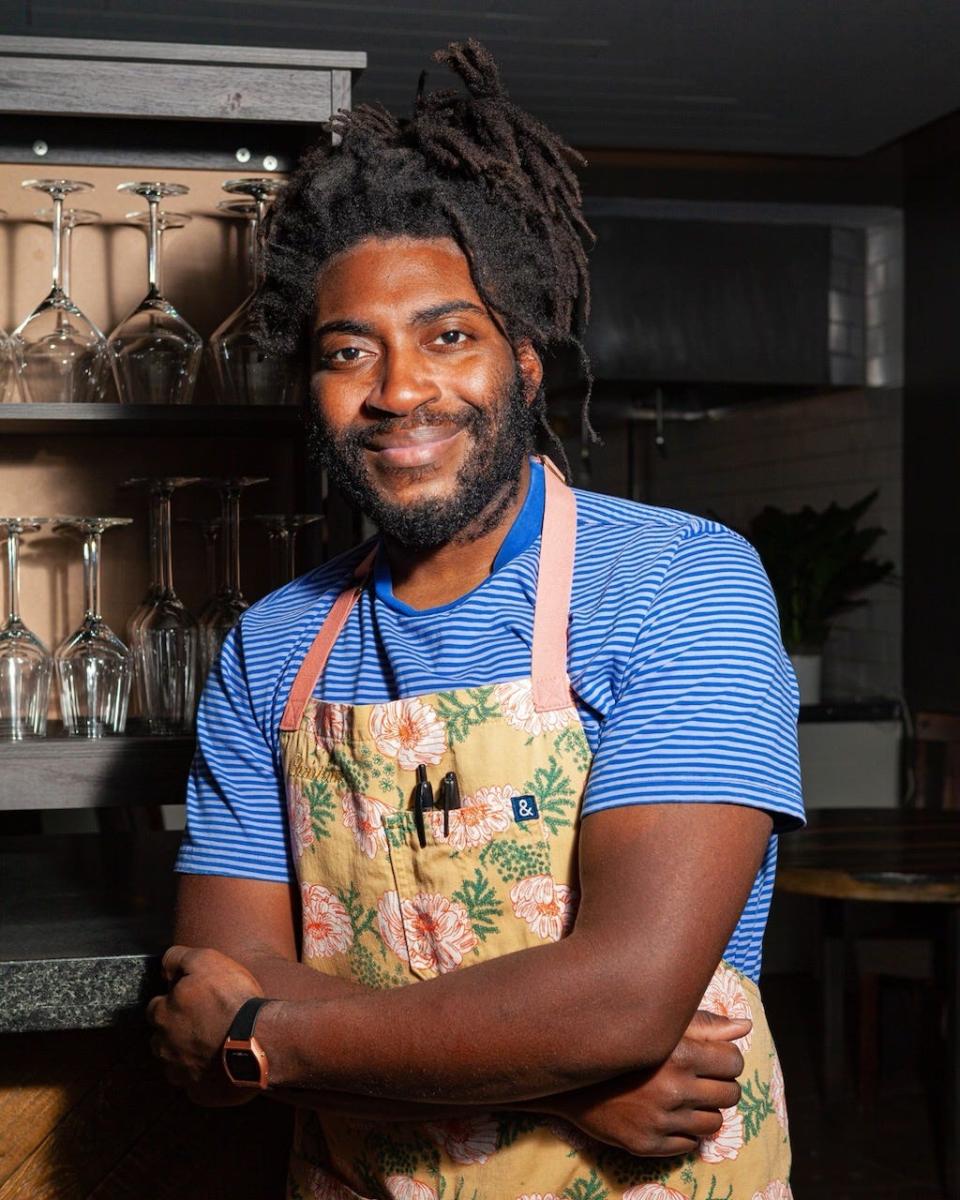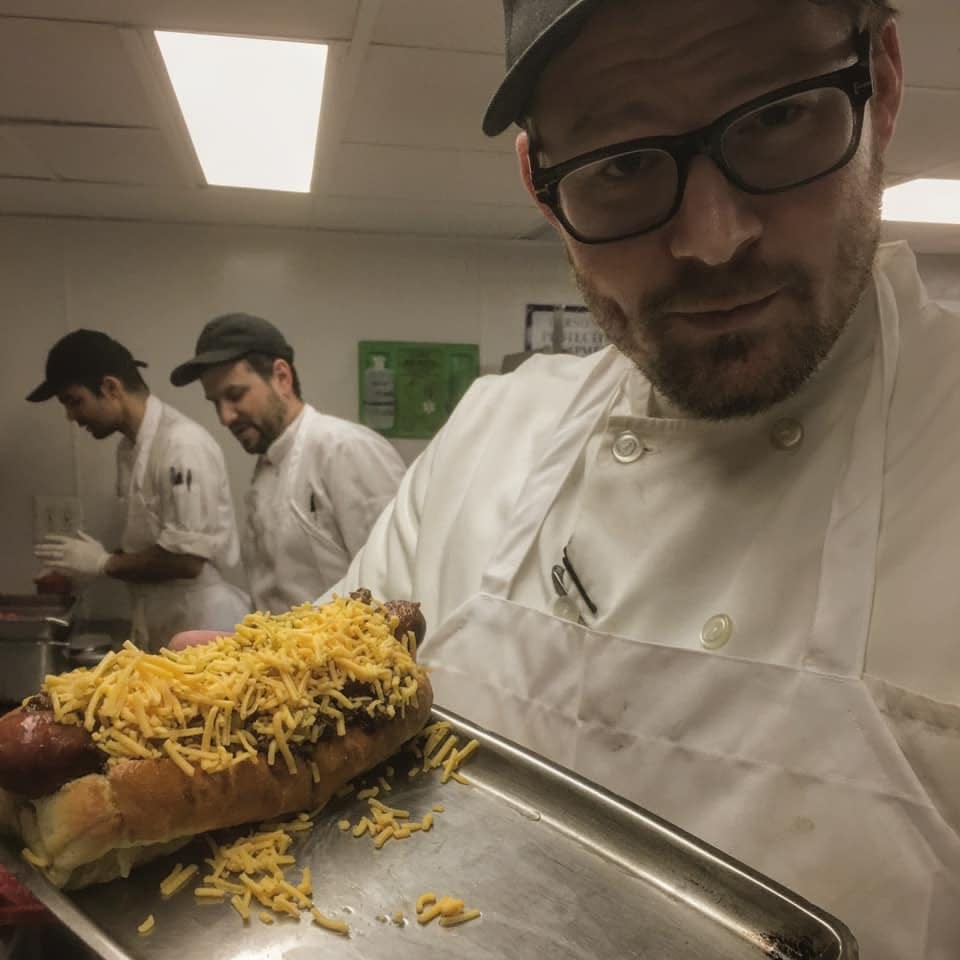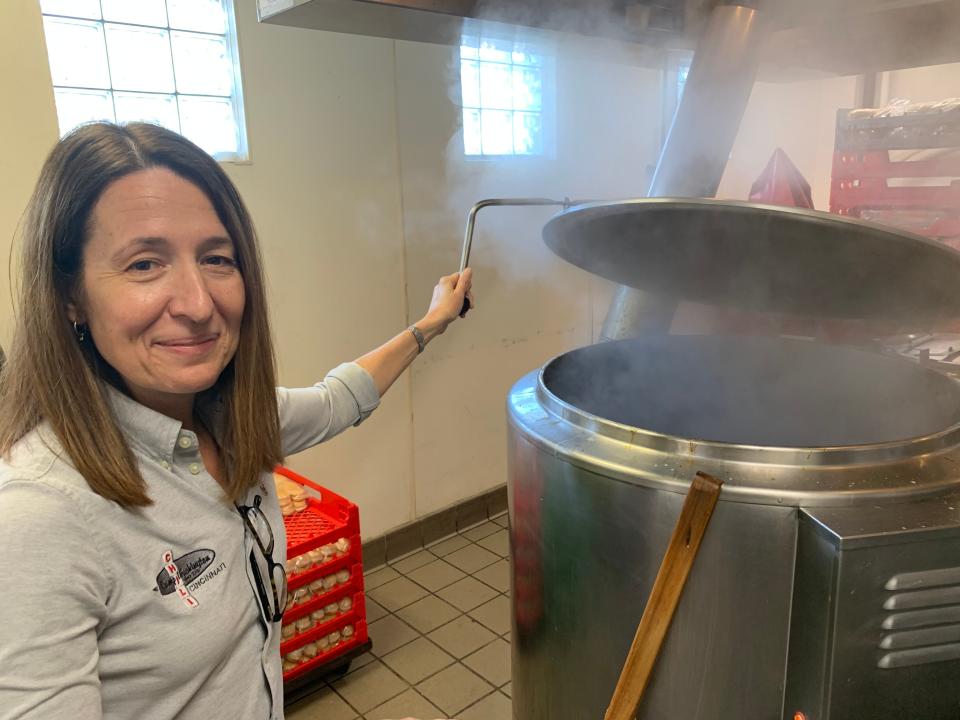Chicago is 'elevating' Cincinnati-style chili. What does that even mean?
Last week I wrote about how the Michelin-stared chef Christian Hunter was planning to open La Verne’s, an “elevated” Cincinnati-style chili parlor, in Chicago. Hunter is a pretty big deal these days. After opening the much-lauded Chicago restaurant Atelier, he was named a finalist for a 2023 James Beard Award and received a Michelin Young Chef Award. This month Hunter’s face graces the cover of Chicago magazine, in which Atelier is named the second best new restaurant in Chicago. Judging by the phone conversation I had with him recently, he seems like a pretty nice guy, too.
My story on Hunter received mixed reactions on social media. While some ex-pat Cincinnatians living in Chicago were thrilled with the news, others took issue with the term “elevated" when it pertains to their beloved chili.
“I’m a Cincinnati girl living in Chicago and I’m not sure about this one," one Facebook user commented. “Why mess with a good thing?”
“Pretty sure Cincinnati chili cannot be elevated by definition. It will just be Chicago-style artisan Cincinnati chili and not the real thing,” another user wrote.

I get it. Whether it’s Nashville hot chicken or New England clam chowder, whenever I learn that a chef wants to elevate a beloved local or regional dish, my first instinct is to roll my eyes. And that’s especially true when it comes to our chili. My concern grows even deeper when the chef doing the elevating isn’t from Cincinnati.
Do they think they can do it better than the generations of Macedonian families have been doing it for a century here in Cincinnati? Is their mission to make something good out of a dish they deem inherently bad?
In 2019, the owners of a Brooklyn restaurant called the HiHi Room decided to put a version of Cincinnati chili on their menu. The problem, according to a Grub Street article, was that their Bay Area-raised chef was not a fan. To address what he saw as its shortcomings, he created what he called “Spaghetti Cincinnati,” a churched up three-way with a duck Bolognese enhanced with liver and duck hearts and house-made pasta sauteed in butter and Grana Padano. I never had a chance to taste it, but after reading that the reinterpretation was coming from a chef who never liked our chili in the first place, I didn't feel the need to.
But Hunter is different. He loves Cincinnati chili and, after talking to him, I can promise you his intentions are honorable.
While Hunter never lived in Cincinnati, his mother grew up in what he calls “old-school Over-the-Rhine.” After moving to Lexington, she taught Hunter about her hometown chili by making homemade versions of it for him. (La Verne, by the way, is named after her.) Hunter was also a fan of Gold Star chili, which had several locations in the Lexington area, as well as Skyline. He takes issue with the word “elevated,” too. Before opening his restaurant, he is planning several trips to Cincinnati where he hopes to meet with the pros to see how a proper chili parlor works.
– At the Table: Sign up for Keith Pandolfi's weekly food newsletter –
“I’m not trying to elevate it,” Hunter said. “For me, one of the best things you do in food is try to get close to what it is at the source. To even think I could elevate this dish? I wouldn’t go that far. It is all about memories for me. I want La Verne’s to feel like eating at my mother’s table. I want the food quality to be high, but the love is there.”
When Cincinnati chili met the Gramercy Tavern
I asked Travis Reidel, a Cincinnati chef whose credentials include stints at Le Bar a Boeuf and Jean-Robert’s Table, what elevated cuisine means to him. “[It] means the time and execution that went into the preparation of a dish before the server places it in front of the guest,” he answered. “A composed dish doesn’t have to be overly complicated or [display the] pure madness of a chef’s mind.” The dish, he continued, is only successful if it stands out “and hits all human senses.”

Reidel has experience with both elevating and fighting for the soul of Cincinnati chili. While working on the butchery team at chef Danny Meyer’s famed Gramercy Tavern in Manhattan, his team manager sought his help to come up with a lunch special that would feature the restaurant’s house-made frankfurter.
“[He] called my name and said, ‘Hey, Cincinnati Kid, what’s that weird hot dog you eat in your homeland?’ I turned with a big grin and said, ‘the Skyline cheese coney!’” Reidel recalls.
Working with the team at the Gramercy, Reidel helped create a version of Cincinnati chili with rendered ground wagyu chuck and sirloin. To his relief, everyone agreed that the spices should be the same ones used in traditional Cincinnati chili recipes, “and I may or may not have sprinkled some unsweetened cocoa I had a pastry chef shave up for me into our pot of chili,” Reidel said.
For toppings, Reidel and his team went with the sweet onion relish associated with traditional New York-style hot dogs, though they kept the dice similar to the one used on Cincinnati-style coneys. Instead of yellow mustard, they used pickled mustard seeds and topped it with cheddar.
Reidel said he was pleased with the results. That is until they got to the cheese. ”They wanted it to be melted,” he said. “And I almost lost my (expletive) over it.” But after a few grunts and chosen words in the restaurant’s walk-in, ”as well as a few Rocky punches on the pig carcass hanging in there,” he found peace. ”I moved on and accepted the atrocities,” he said. ”I was still very proud of it.”
A chili expert weighs in

So, what does an OG Cincinnati chili icon think about elevating our three-ways and coneys?
“I think I am honored, especially if it’s a high-end chef doing it,” said Maria Papakirk, the second-generation owner of Camp Washington Chili. “I think they are giving us the attention that we deserve.”
Still, there are limits to what Papakirk can accept. “I don’t think they can elevate it using wagyu beef or something high end,“ she said. “Serve it with white linens or a fresh flower at the table. Now that would be elevated. If you play with the ingredients too much, it’s not Cincinnati chili.”
Either way, Papakirk believes that a person's first taste of chili should be in its original form at a genuine Cincinnati chili parlor. “When people come to Cincinnati, they want Cincinnati chili, not something with filet mignon shredded up on a bed of soba noodles.”
Papakirk respects what Hunter is trying to do in Chicago, but she hopes Cincinnati chili will never become a nationwide phenomenon the way, say, Nashville chicken or Detroit pizza have in recent years. “I want it to stay in Cincinnati,” she said. “If you can go to Chicago or L.A. or South Beach for our chili, it’s not the same as having it in Cincinnati. People want something special that has a history. I don’t think it will work anywhere else.”
This article originally appeared on Cincinnati Enquirer: Cincinnati chili to get 'elevated' in Chicago. What does that mean?